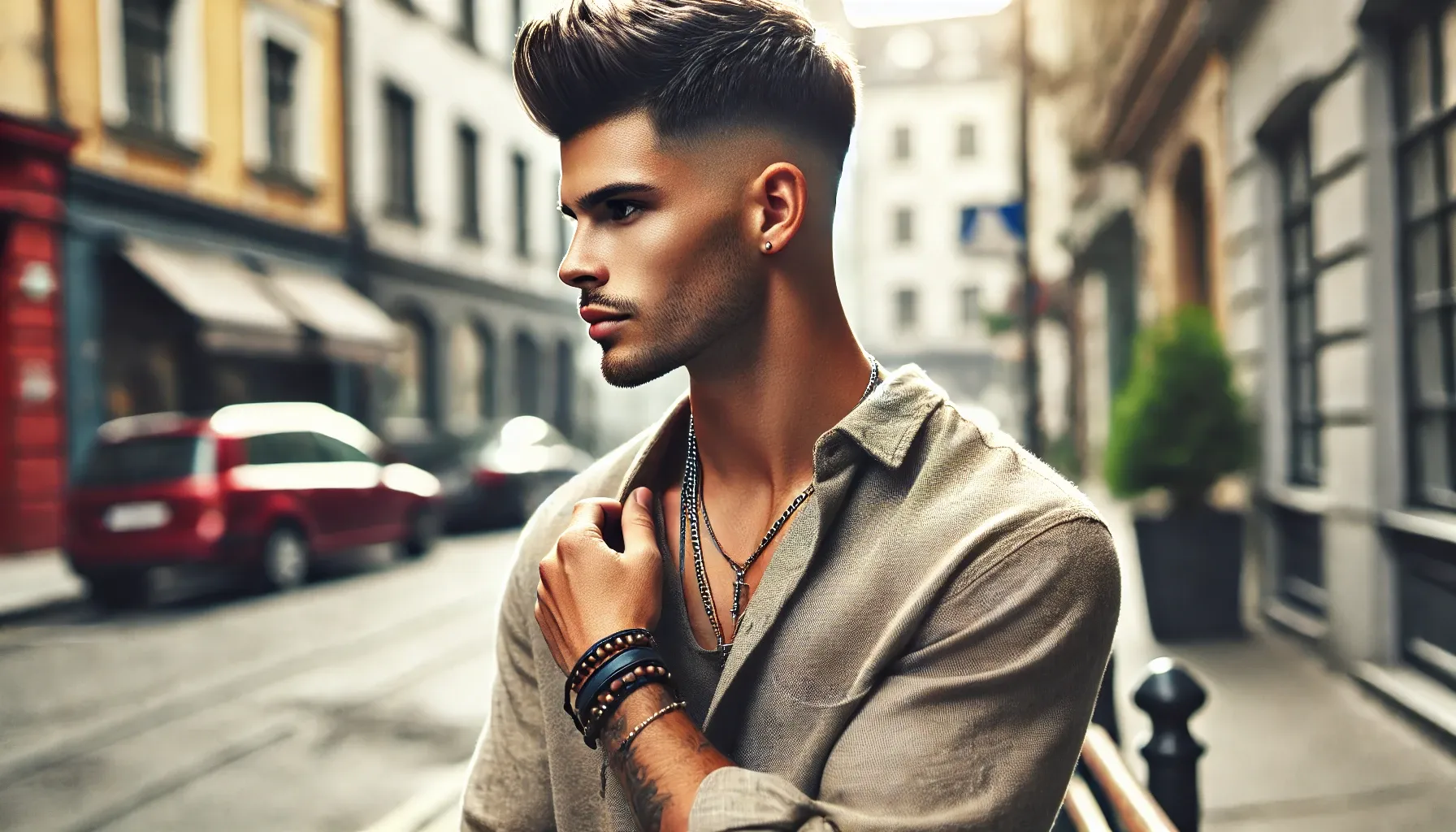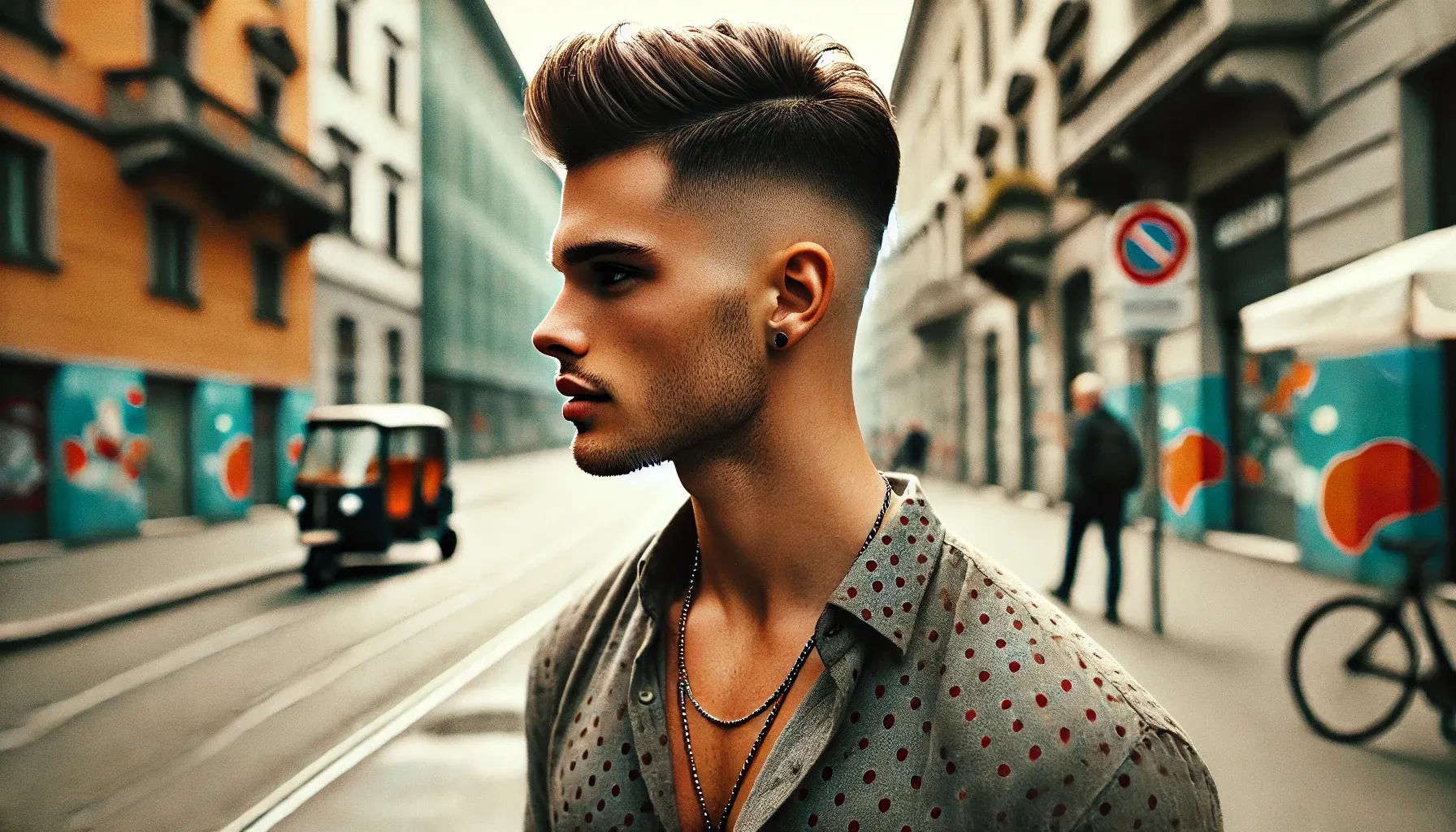The taper fade haircut, with its sleek transitions and sharp lines, has been a go-to for men of all ages. Whether you're a teenager looking to make a statement, a professional aiming for a clean look, or someone who just appreciates a well-groomed appearance, the taper fade has something to offer. But what exactly is it, and why has it remained so popular over the years?
What Is a Taper Fade Haircut?
At its core, the taper fade haircut is all about gradual transitions. It starts with hair that's longer on top, which then gradually tapers down the sides and back, getting shorter and shorter until it seamlessly blends into the skin. The "fade" part of the name comes from how the hair seems to fade away as it gets closer to the neckline. The result is a crisp, clean look that can be customized to fit nearly any face shape or style preference.
There are several variations of the taper fade, each offering a slightly different look:
- Low Taper Fade: This variation starts the fade just above the ears, creating a more subtle and conservative appearance. It's ideal for those who want to keep things classic but still have a modern edge.
- Mid Taper Fade: The fade begins a bit higher on the head, around the temples. This style offers a balanced look, not too bold but not too understated either.
- High Taper Fade: Here, the fade starts high on the head, often near the forehead. This creates a more dramatic contrast between the longer hair on top and the shorter sides, perfect for those who want to stand out.
The History of the Taper Fade
The taper fade has roots that go back decades. Its origins are often traced to the military, where short, low-maintenance haircuts were a necessity. Over time, barbers began to experiment with these cuts, adding their own flair and creating the various styles of fades we see today.
In the 1980s and 1990s, the taper fade became a staple of urban fashion. Hip-hop culture embraced the look, with artists and fans alike sporting sharp fades that ranged from low and subtle to high and bold. This period also saw the introduction of more creative takes on the fade, with intricate designs shaved into the sides of the head becoming popular.
Today, the taper fade has transcended cultural boundaries, becoming a global phenomenon. From the streets of New York to the runways of Paris, this versatile haircut has proven its staying power.
Why the Taper Fade Remains Popular
So, why has the taper fade endured while other styles have fallen by the wayside? There are several reasons:
- Versatility: One of the biggest advantages of the taper fade is its adaptability. It works well with almost any hair type, whether your hair is straight, curly, or somewhere in between. You can also pair it with various lengths and styles on top, from short buzz cuts to longer, textured looks.
- Clean and Professional: The taper fade offers a polished appearance that’s perfect for both professional and casual settings. It’s sharp enough to make an impression but not so extreme that it’s inappropriate for the office or formal events.
- Low Maintenance: Despite its precise appearance, the taper fade is surprisingly easy to maintain. Regular trims every few weeks will keep the fade looking fresh, but it doesn’t require daily styling or special products. For men who want a stylish haircut without a lot of fuss, this is a major plus.
- Customization: No two taper fades have to be exactly alike. You can personalize the look by adjusting the fade's height, incorporating different textures on top, or even adding designs. This ability to make the haircut your own is a big part of its appeal.
How to Choose the Right Taper Fade for You
With so many variations of the taper fade, it can be tough to know which one is right for you. Here are a few tips to help you decide:
- Face Shape: Your face shape plays a big role in determining which type of taper fade will look best on you. For example, a low taper fade can help elongate a round face, while a high taper fade can add definition to a square face.
- Hair Texture: Different hair textures respond differently to taper fades. For instance, if you have curly hair, a mid or high taper fade can create a striking contrast between the curls on top and the shorter sides. On the other hand, straight hair might look better with a low taper fade for a more blended appearance.
- Personal Style: Consider your overall style when choosing a taper fade. If you prefer a more conservative look, a low or mid taper fade is a safe bet. If you like to make a statement, go for a high taper fade or even a skin fade.
- Maintenance: Think about how much time you’re willing to spend on upkeep. While all taper fades require some maintenance, high taper fades or skin fades may need more frequent touch-ups to keep the fade looking sharp.
How to Communicate with Your Barber
Getting the perfect taper fade requires good communication with your barber. Here's how to ensure you walk out of the shop with a haircut you'll love:
- Bring Photos: A picture is worth a thousand words, especially when it comes to haircuts. If you have a specific style in mind, bring a photo to show your barber. This will give them a clear idea of what you're looking for.
- Be Specific: Don’t just ask for a “taper fade.” Specify whether you want a low, mid, or high fade, and how short you want the hair on top. If you’re not sure, ask your barber for their opinion based on your face shape and hair type.
- Ask Questions: If you’re unsure about any part of the process, don’t hesitate to ask your barber. They can explain how different types of fades will look on you and recommend what they think will work best.
- Trust Your Barber: Finally, remember that your barber is a professional. While it’s important to communicate your preferences, it’s also a good idea to trust their expertise. They’ve likely done hundreds of taper fades and know how to tailor the style to suit you.
The Future of the Taper Fade
As with any fashion trend, the taper fade continues to evolve. Barbers and hairstylists are always experimenting with new techniques and variations, from incorporating bold colors to combining fades with other popular styles like the pompadour or the undercut.
One thing is certain: the taper fade isn’t going anywhere. Its versatility, ease of maintenance, and sharp appearance make it a timeless choice for men everywhere. Whether you’re sticking with a classic look or trying something new, the taper fade is a haircut that’s always in style.
In conclusion, the taper fade haircut is about looking sharp, feeling confident, and embracing a style that has stood the test of time. Whether you're new to the taper fade or a long-time fan, there's no denying its impact on men’s fashion. So next time you're in the barber's chair, why not give the taper fade a try? You might just find it's the perfect cut for you.





